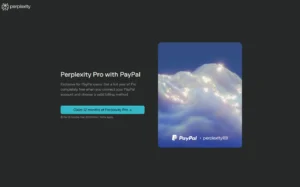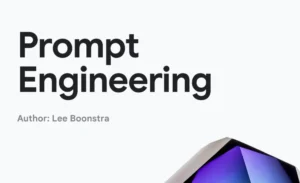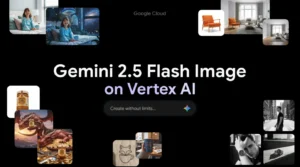9 Best AI-Powered Tools for Predictive Data Analytics Picks
We’ve all been there – drowning in spreadsheets, trying to make sense of mountains of data, wondering what the future holds for our business. What if we told you there’s a way to peek into tomorrow using today’s data? The best AI-powered tools for predictive data analytics are transforming how businesses forecast trends, anticipate customer behavior, and make decisions that actually stick. These aren’t just fancy calculators – they’re crystal balls powered by machine learning that can spot patterns humans miss entirely.
Qlik Sense
Qlik Sense stands out as one of the most user-friendly platforms in the predictive analytics space, especially if you’re not a data scientist but still want powerful insights.
Key Features
- No-code machine learning that automatically selects optimal models for your data
- Interactive forecasting dashboards that update in real-time as you explore
- AutoML capabilities that find the best algorithms without manual intervention
- SHAP values for complete transparency in how predictions are made
- Self-service analytics designed for business users, not just tech experts
Pricing
Starting at $2,750 per month for the Professional plan (predictive analytics features aren’t available on lower tiers)
Pros and Cons
Pros:
- Genuinely easy to use without coding skills
- Excellent interactive visualizations
- Strong automation features
- Transparent prediction explanations
Cons:
- Can be slow with large datasets
- Advanced features might feel clunky
- Higher-tier pricing only
Best For
Mid-sized businesses that want powerful predictive analytics without needing a team of data scientists. It’s perfect for exploring “what-if” scenarios through interactive dashboards.
ThoughtSpot
ThoughtSpot makes predictive analytics feel almost too easy – you literally just ask questions in plain English and get AI-powered insights back.
Key Features
- Natural language search that understands conversational queries
- AI-powered predictions without building custom models
- Liveboard dashboards with real-time updates
- Easy embedding into other business applications
- Time-series forecasting with simple filtering options
Pricing
From $1,250 per month for 20 users on the Essentials plan
Pros and Cons
Pros:
- Almost zero learning curve
- Natural language interface feels intuitive
- Great for non-technical users
- Easy integration with existing tools
Cons:
- Limited visualization options compared to competitors
- May lack depth for advanced analytics needs
Best For
Teams that want predictive insights without the complexity. If you’ve ever wished you could just “ask” your data questions and get answers, this is your tool.
Useful Articles:
Tableau
Tableau has been the visualization king for years, and their AI-enhanced predictive features make complex data storytelling surprisingly accessible.
Key Features
- Advanced data visualization with predictive modeling
- Machine learning integration for forecasting
- Drag-and-drop interface for building predictive models
- Cloud integration with major platforms
- Collaborative analytics for team insights
Pricing
Starting at $15 per user per month
Pros and Cons
Pros:
- Industry-leading visualization capabilities
- Strong community and resources
- Flexible deployment options
- Excellent for data storytelling
Cons:
- Steeper learning curve for advanced features
- Can get expensive with multiple users
- Requires some technical knowledge for complex predictions
Best For
Organizations that prioritize beautiful, interactive visualizations alongside their predictive analytics. Great for presenting insights to stakeholders.
IBM Watson Studio
IBM Watson Studio brings enterprise-grade AI to predictive analytics, combining decades of statistical expertise with modern machine learning capabilities.
Key Features
- End-to-end ML workflow from data prep to deployment
- AutoAI capabilities for automated model building
- Collaborative environment for data science teams
- Model explainability tools for transparent predictions
- Integration with IBM Cloud Pak for enterprise deployment
Pricing
Starting at $1.02 per capacity unit-hour with a free tier available
Pros and Cons
Pros:
- Enterprise-ready with robust security
- Comprehensive feature set
- Strong model governance
- Free tier for testing
Cons:
- Can be overwhelming for smaller teams
- Requires more technical expertise
- Complex pricing structure
Best For
Large enterprises that need comprehensive predictive analytics with strong governance and security features. Ideal for organizations with dedicated data science teams.
Alteryx AI Platform
Alteryx excels at data preparation and blending, making it easier to get your data ready for predictive modeling without the usual headaches.
Key Features
- Advanced data preparation and blending tools
- Drag-and-drop workflow design
- Machine learning automation for predictive modeling
- 80+ data connectors for seamless integration
- Collaborative analytics platform
Pricing
$4,950 per user per year
Pros and Cons
Pros:
- Excellent data preparation capabilities
- User-friendly workflow design
- Strong automation features
- Comprehensive connector library
Cons:
- High price point
- Can be resource-intensive
- Learning curve for advanced features
Best For
Organizations dealing with complex, messy data that needs significant preparation before analysis. Perfect for teams that spend too much time cleaning data instead of analyzing it.
Microsoft Power BI
Microsoft Power BI offers surprisingly robust predictive analytics capabilities at a price point that won’t break the bank, especially if you’re already in the Microsoft ecosystem.
Key Features
- AI-powered insights and anomaly detection
- Forecasting capabilities with confidence intervals
- Natural language queries for easy exploration
- 200+ data connectors including Microsoft services
- Embedded analytics for custom applications
Pricing
Starting at $10 per user per month with a free version available
Pros and Cons
Pros:
- Extremely affordable
- Seamless Microsoft integration
- Good balance of features and usability
- Strong mobile experience
Cons:
- Limited advanced ML capabilities
- Can feel restrictive for complex analyses
- Visualization options aren’t as extensive as competitors
Best For
Small to medium businesses already using Microsoft tools who want predictive analytics without a huge investment. Great for teams that need basic forecasting and trend analysis.
Useful Articles:
H2O.ai
H2O.ai brings serious machine learning firepower to predictive analytics, with automated features that make advanced AI accessible to business users.
Key Features
- Driverless AI for automated machine learning
- Advanced automation for feature engineering and model selection
- Model explainability with multiple interpretation methods
- Open source integration with popular ML tools
- Scalable deployment options
Pricing
Available upon request with open source options
Pros and Cons
Pros:
- Cutting-edge automation capabilities
- Strong model performance
- Excellent explainability features
- Open source foundation
Cons:
- Requires technical knowledge
- Can be complex for simple use cases
- Pricing not transparent
Best For
Data science teams that want state-of-the-art automated machine learning capabilities. Ideal for organizations that need the most accurate predictions possible.
Sisense
Sisense specializes in making complex data simple, with embedded analytics capabilities that let you put predictive insights directly into your existing business applications.
Key Features
- Embedded analytics for seamless integration
- AI-powered insights generation
- Advanced statistical modeling capabilities
- Fast data processing with chip methodology
- Data security and governance features
Pricing
Essentials: $40,000 annually, Advanced: $69,000 annually, Pro: $109,000 annually
Pros and Cons
Pros:
- Excellent embedding capabilities
- Fast performance with large datasets
- Strong security features
- Good for customer-facing analytics
Cons:
- High price point
- Complex setup for advanced features
- Limited self-service capabilities
Best For
Companies that want to embed predictive analytics directly into their products or customer-facing applications. Perfect for SaaS businesses looking to add analytics features.
KNIME Analytics Platform
KNIME offers a completely free, open-source approach to predictive analytics with a visual workflow that makes complex analyses more approachable.
Key Features
- Visual workflow design with drag-and-drop interface
- 300+ data connectors for comprehensive integration
- Open source foundation with commercial extensions
- Machine learning integration with popular frameworks
- Collaborative analytics environment
Pricing
Free open source version with commercial extensions available
Pros and Cons
Pros:
- Completely free to start
- Extensive connector library
- Strong community support
- No vendor lock-in
Cons:
- Steeper learning curve
- Requires more technical setup
- Limited commercial support on free version
Best For
Organizations with technical teams who want maximum flexibility without licensing costs. Great for companies that prefer open-source solutions and don’t mind a bit more hands-on setup.
Now that we’ve covered all these powerful platforms, let’s see how they stack up against each other in our comparison.
Comparison Table
| Tool | Best For | Pricing | Key Strength | Learning Curve |
|---|---|---|---|---|
| Qlik Sense | Interactive forecasting | $2,750/month | No-code automation | Easy |
| ThoughtSpot | Natural language queries | $1,250/month | Ease of use | Very Easy |
| Tableau | Data visualization | $15/user/month | Beautiful visualizations | Moderate |
| IBM Watson Studio | Enterprise deployment | $1.02/capacity unit-hour | Comprehensive features | Hard |
| Alteryx | Data preparation | $4,950/user/year | Data blending | Moderate |
| Power BI | Microsoft integration | $10/user/month | Affordability | Easy |
| H2O.ai | Advanced automation | Custom pricing | ML automation | Hard |
| Sisense | Embedded analytics | $40,000/year | Integration capabilities | Moderate |
| KNIME | Open source flexibility | Free | Cost-effectiveness | Hard |
The best AI-powered tools for predictive data analytics each serve different needs and budgets. Whether you’re looking for ease of use, advanced automation, or cost-effectiveness, there’s a solution that fits your organization’s requirements and helps turn your data into actionable predictions.










